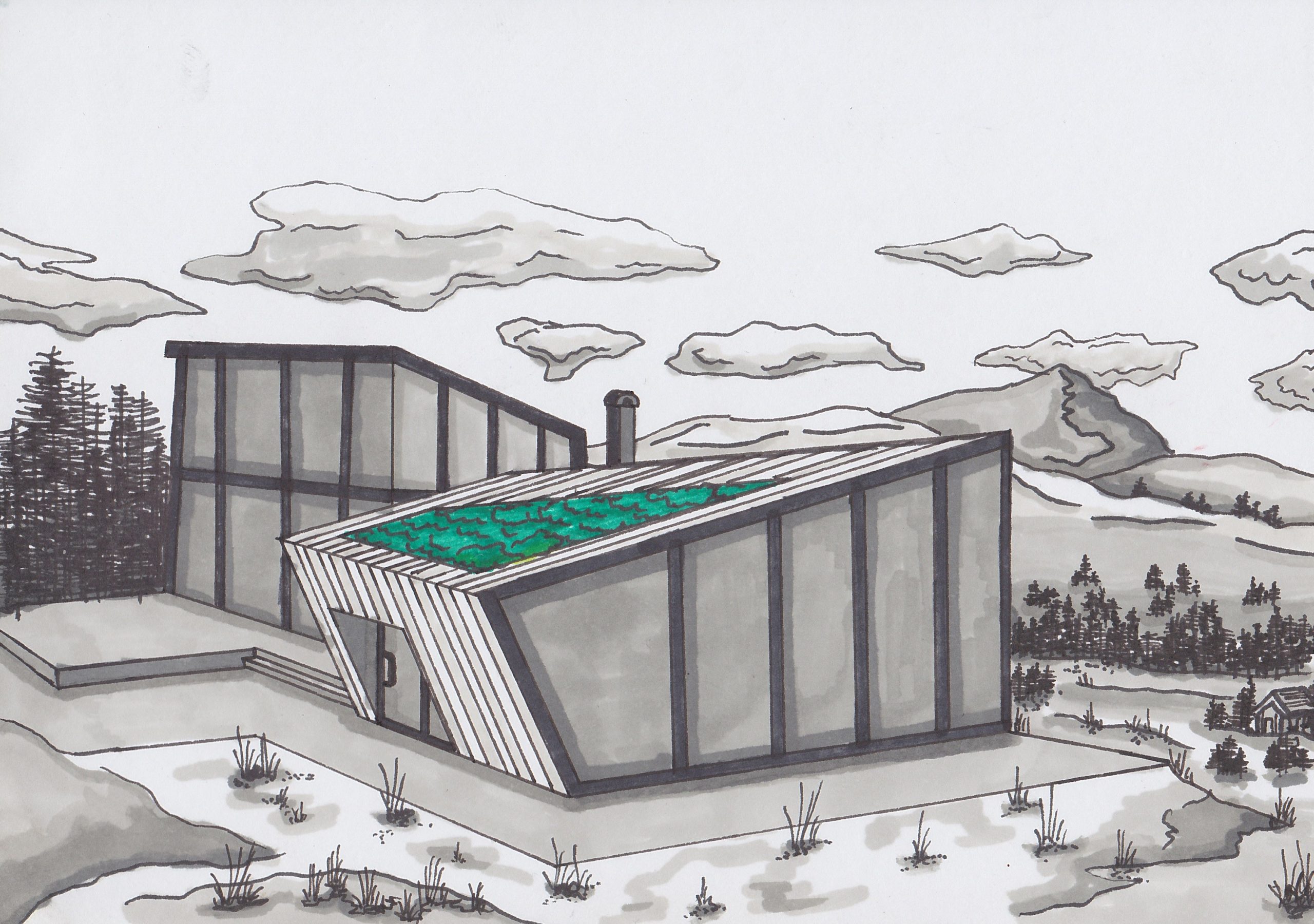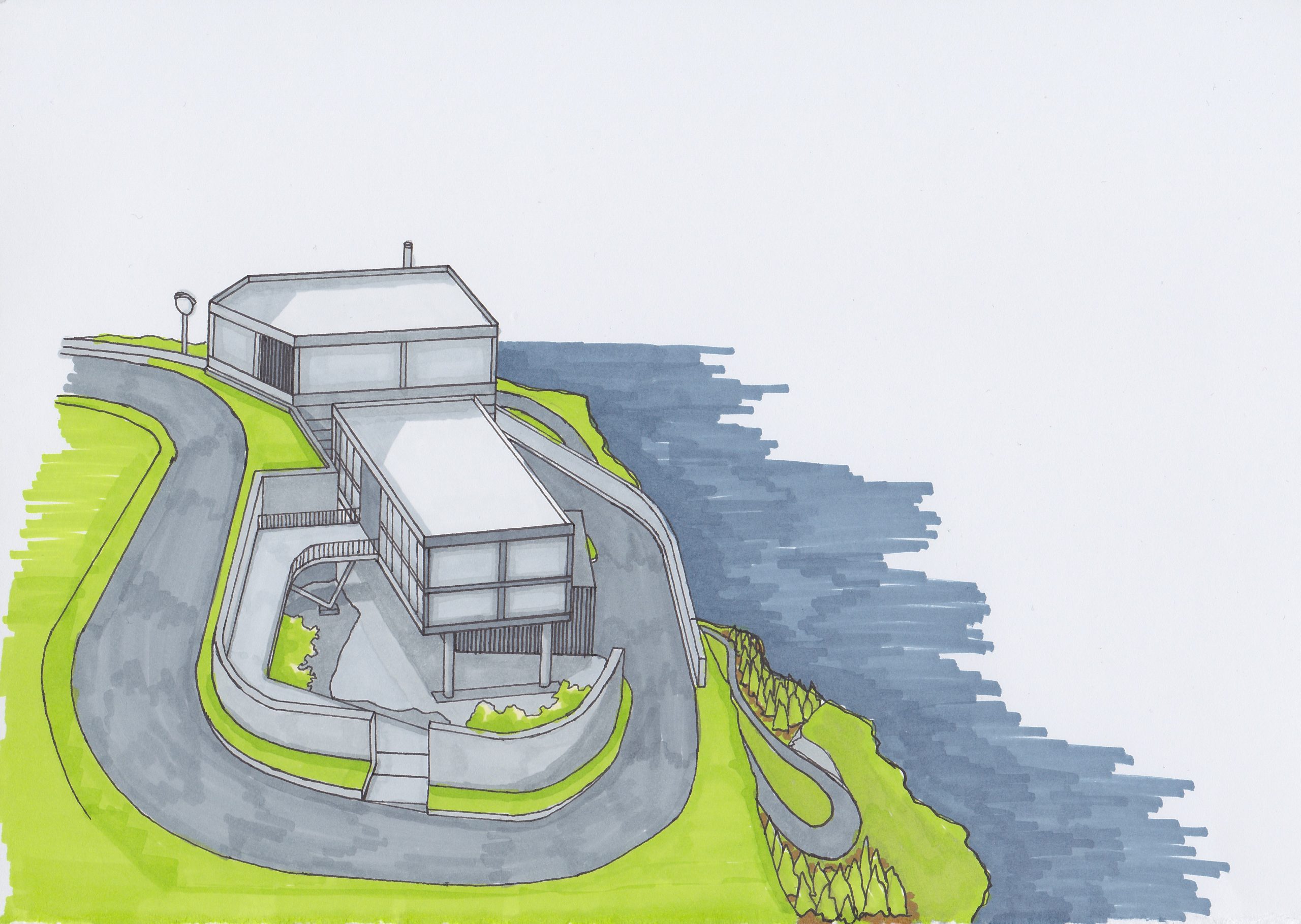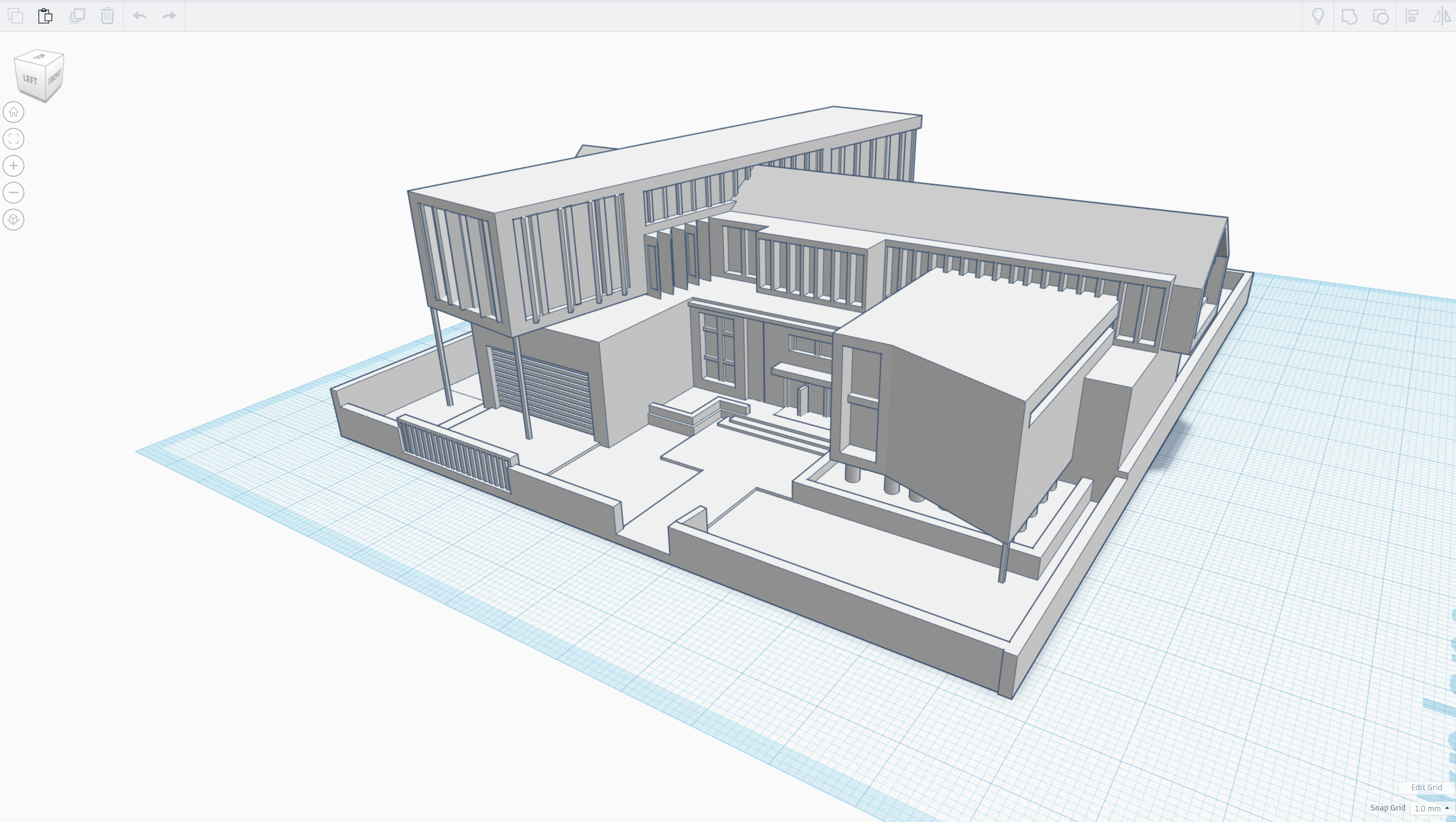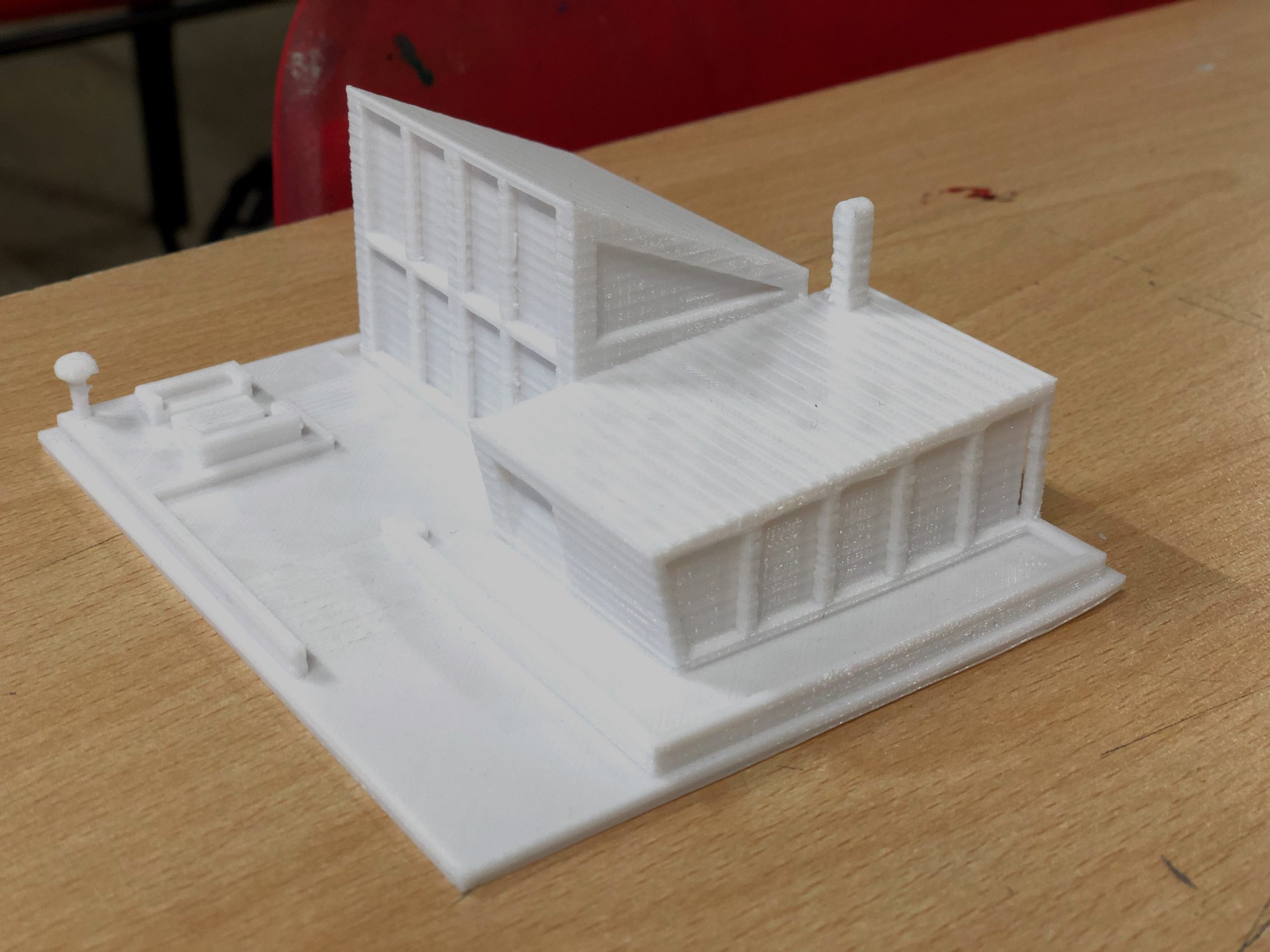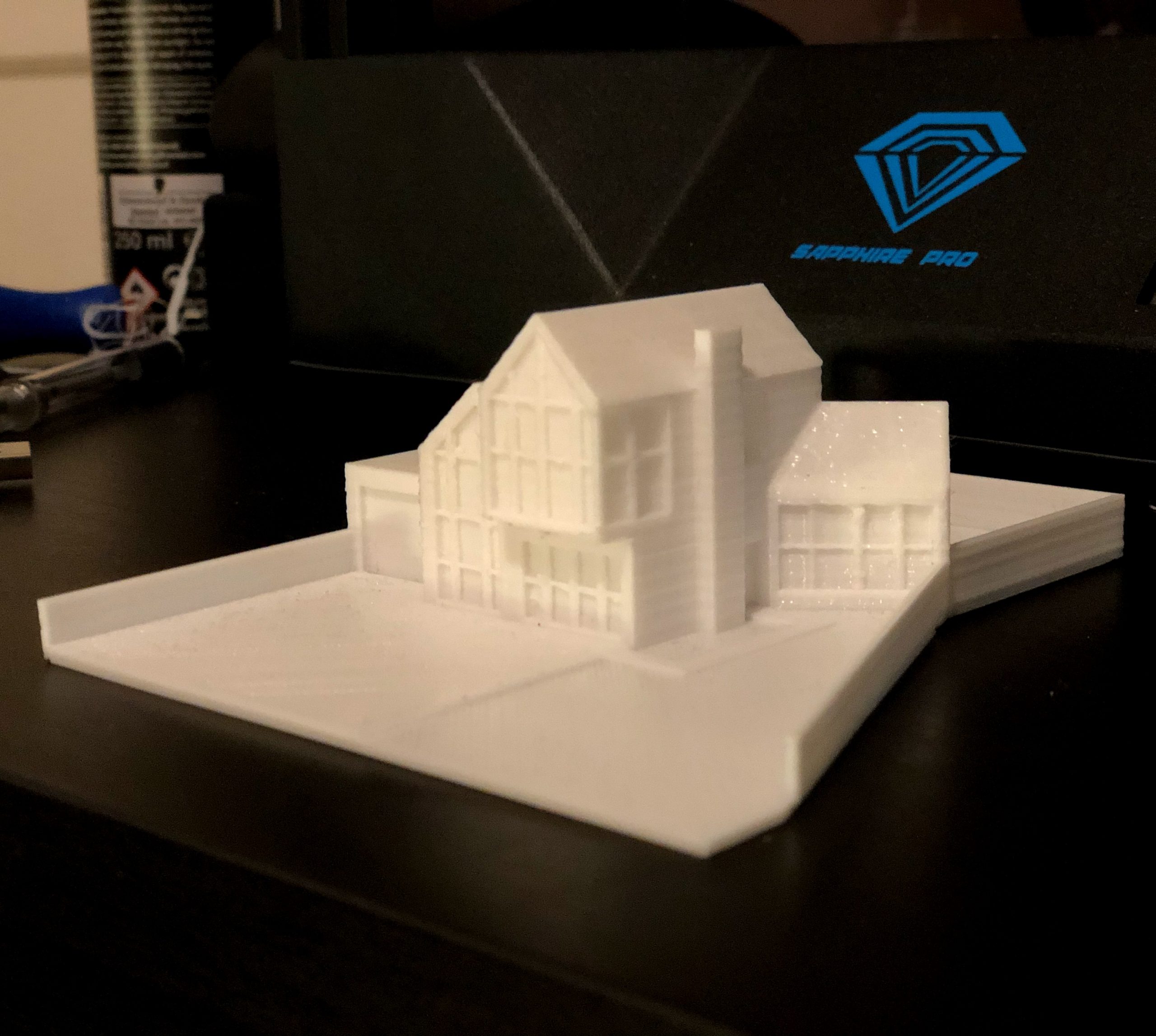Custom Architectural drawings and models:
With these works, I have created custom architectural designs of buildings based on my travels around the world. I design them based on a style you’d expect to see in the area. An example of this would be a modern-rustic style for the Norwegian house, or contemporary for the Los Angeles house. I initially come up with a design by sketching shapes until I am happy with the design, I then add a few minor details to finish off the first stage. Here is an example of a Swiss house sketch during this first stage:
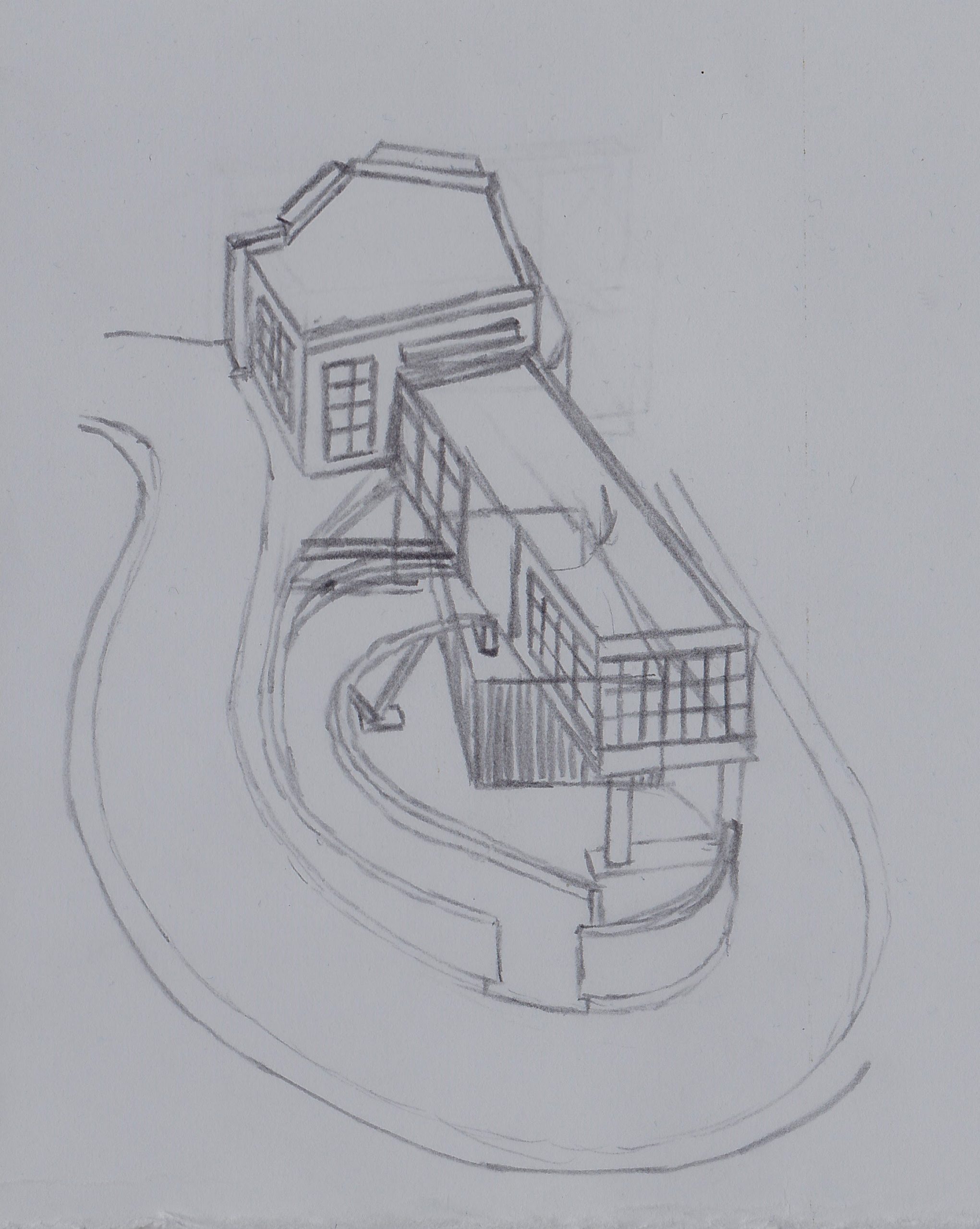
This drawing then gets re-drawn, along with any improvements I wish to make, in a much more clean and professional look with Pro-markers and Copic markers. Pro-Markers allow me to give the drawing a very clean and almost Utopian look, this is fitting given the countries I am working with, Switzerland, Norway and Australia are the 3 most advanced countries on the planet and are all featured in my designs. Here is an example of houses in the second stage:
Next, comes the modelling stage, in this stage, I replicate my designs on a 3d modelling program such as SketchUp or CAD. This is also when I make any final improvements in the design – My main goal when creating these models is making something that looks clean and modern whilst still maintaining a large amount of detail. Sculpting a design is a lengthy process but allows for precision that is practically impossible for a human to replicate. Starting off with a square, you sculpt away or add any parts to create the basic shape of the house. Once the general shape has been completed, you sculpt details like windows, doors, driveways and fencing. On certain houses, particularly the modern Australian homes with large overhangs, supports must be taken into account and included as part of the design. Whilst the plastic is strong, it can collapse under too much weight, as such designs must incorporate structural stability into the design. Here are some examples of a completed model:
The model is then sent to the 3D printer and created with a precision of a 0.1mm nozzle. The time it takes to print is dependent on the size and mass of the model but can take from 5-10 hours. Here is an example of completed models:
Whilst these designs are not in the style of any specific artists or architects, they do draw from the creative process and details of architects such as Santiago Calatrava and Renzo Piano. More on this can be found on the Artist research page of the Website.
Overall, I am pleased with how these models worked out, they reflect my initial intentions of creating a minimal and accurate model that reflects the architectural style I designed the house in. If I were to re-design these, I would change the scale and make the models larger to allow the viewer to see details with ease.
